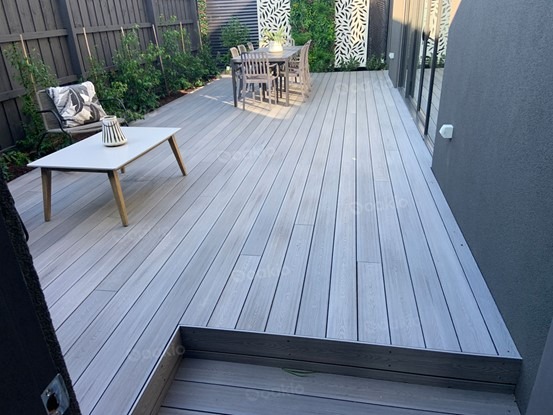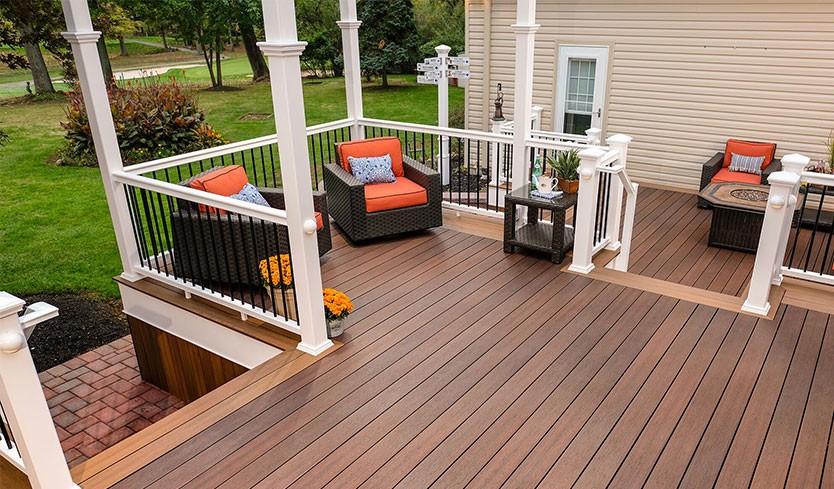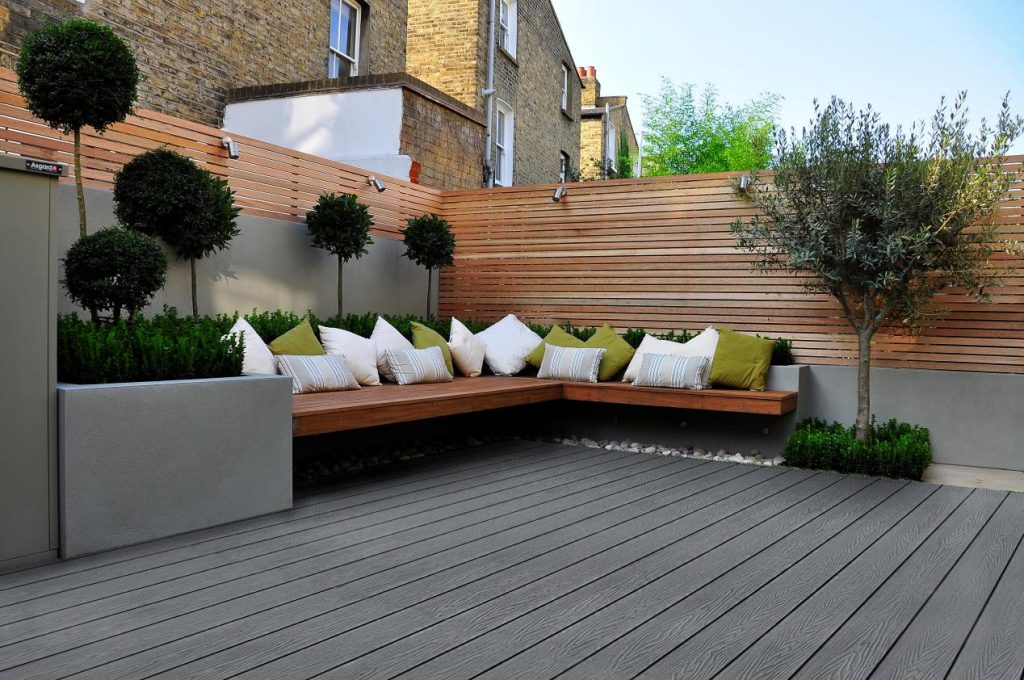When designing your dream outdoor space, the idea of best budget composite decking might sound too good to be true. But what if we told you that beauty, durability, and affordability can all come together in one solution? Whether you’re renovating a backyard, building a new patio, or upgrading your deck, cost-effective composite decking options are now more accessible than ever.
Table of Contents
This in-depth guide explores everything you need to know about choosing the best budget composite decking without sacrificing quality or visual appeal. We’ll uncover material types, compare styles, and help you make an informed choice that balances price with performance. Plus, we’ll offer practical tips for saving even more on your next decking project.
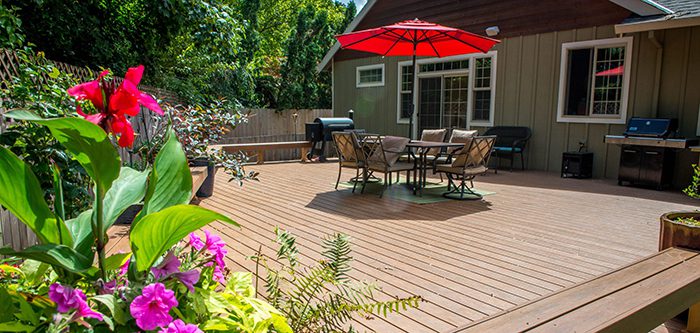
Why Choose Composite Decking on a Budget?
Gone are the days when homeowners had to choose between price and quality. With modern manufacturing methods and innovative materials, it’s now possible to get high-performance decking at a fraction of what it used to cost.
Choosing the best budget composite decking offers several advantages:
Low Maintenance: Unlike wood, composite decking doesn’t splinter, warp, or need staining.
Weather Resistance: It handles moisture, UV, and temperature swings without deterioration.
Longevity: Budget-friendly doesn’t mean short-lived. Many options last 15–25 years.
Aesthetic Flexibility: From wood-grain textures to modern greys, there’s a design for every taste.
In essence, you don’t have to overspend to enjoy a beautiful, functional, and long-lasting outdoor living space.
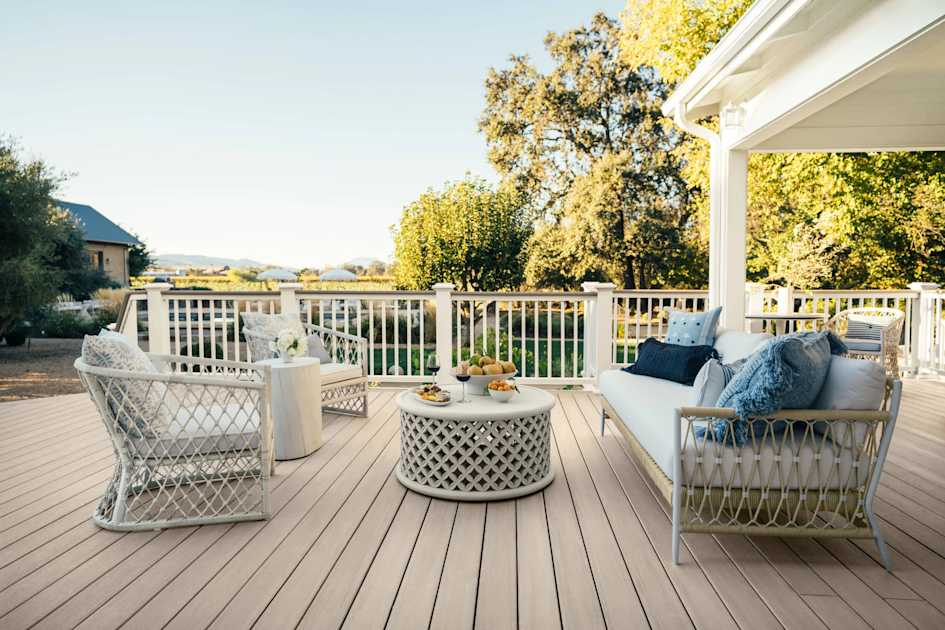
Types of Budget-Friendly Composite Decking
There are various types of composite decking to suit different needs and budgets. Here are the main categories when considering affordable options:
1. Uncapped Composite Decking
This is the original form of composite decking—made from recycled wood fiber and plastic. While it’s more prone to fading and staining than capped versions, it’s a cost-effective entry point into the composite world.
Pros: Very affordable, eco-friendly, durable in structure
Cons: Less resistant to stains and fading
Ideal for shaded decks, garden paths, or temporary structures where appearance isn’t the main priority.
2. Single-Capped Composite Decking
Single-capped decking features a protective polymer shell on the top surface only. This provides a balance between affordability and performance.
Pros: Better stain resistance and longevity than uncapped
Cons: Slightly more expensive than uncapped
This option is ideal for homeowners looking for a good balance between price and performance.
3. Hollow Composite Decking
Rather than solid boards, hollow decking boards use less material—making them lighter and cheaper.
Pros: Lightweight, affordable, easy to install
Cons: Slightly less durable under heavy foot traffic
Perfect for residential patios and low-traffic areas.
4. Grooved vs. Square Edge Boards
Grooved boards can be installed using hidden fasteners, while square-edge boards use screws. For budget-conscious users, square-edge boards may reduce installation costs and are suitable for visible edges or DIY projects.
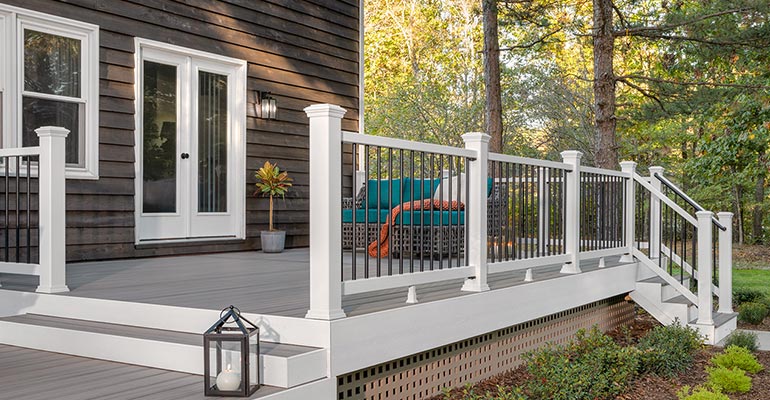
How to Identify the Best Budget Composite Decking
Not all budget decking is made equal. So how can you determine which is truly the best composite decking on a budget?
Look for the Following Features:
Material Composition: Choose a mix of recycled plastic and wood fibers with high structural integrity.
UV Resistance: This prevents early fading and extends color vibrancy.
Slip Resistance: Especially important in rainy climates.
Certifications: Products with ISO or CE certifications tend to meet better safety and durability standards.
Warranty: Even budget decking should offer a warranty of at least 10 years.
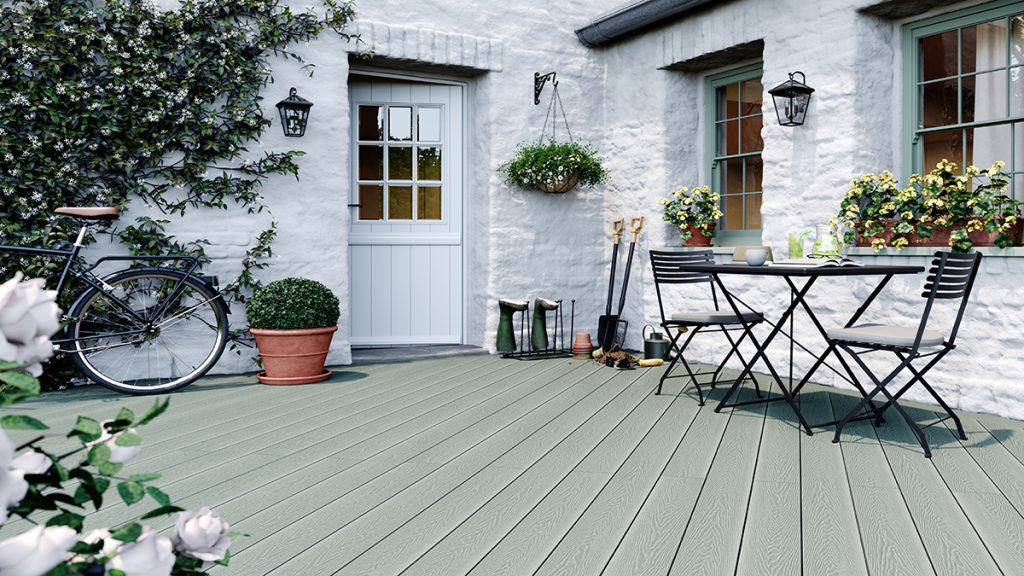
Design Tips to Maximize Aesthetic Value
A budget doesn’t have to restrict your design dreams. The right planning and styling can make any decking look premium.
1. Opt for Darker Tones
Dark brown or charcoal-colored decking boards can mimic tropical hardwoods and hide dirt better—giving a high-end feel with low maintenance.
2. Mix and Match
Use contrasting colors for borders or stairs. This creates a custom look without the need for expensive materials.
3. Use Decorative Fascia Boards
Even in budget ranges, many brands (including Hosung) offer fascia boards that elevate your deck’s look.
4. Add Lighting or Planters
Ambient lighting and integrated planters help enhance your deck without raising material costs.
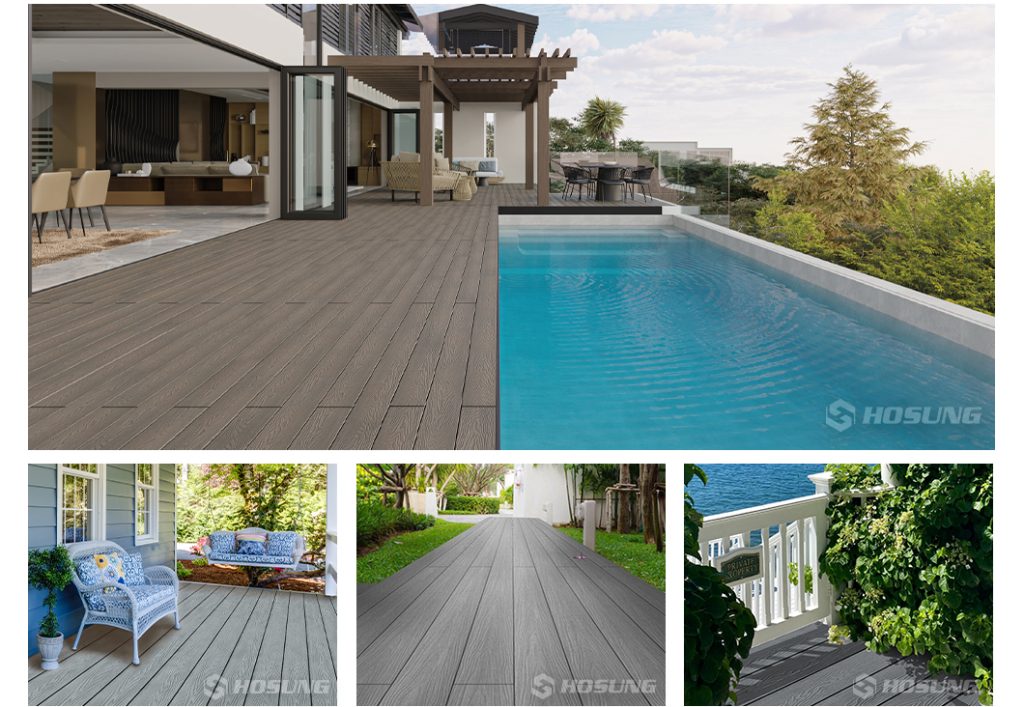
Cost Comparison: Composite vs. Wood vs. PVC
Let’s break down how the best budget composite decking compares to other common decking materials in terms of cost, maintenance, lifespan, and overall value.
| Material | Average Cost per Sq Ft | Maintenance | Lifespan | Budget-Friendly? |
|---|---|---|---|---|
| Pressure-Treated Wood | $1.50–$4.00 | High (staining/sealing) | 10–15 years | ✅ |
| Hollow Composite | $2.00–$4.00 | Low | 15–25 years | ✅✅✅ |
| Solid Composite | $3.50–$6.00 | Very low | 25–30 years | ✅✅ |
| PVC | $5.00–$9.00 | Extremely low | 30+ years | ❌ |
Pressure-treated wood remains the go-to material for ultra-low budgets, but its hidden costs—such as yearly staining, sealing, and potential replacement—can make it more expensive over time. While the upfront material cost is appealing, frequent maintenance and a shorter lifespan often lead to higher long-term costs. For homeowners with tight budgets who don’t mind regular upkeep, it can still be a viable option.
Hollow composite decking, on the other hand, provides a sweet spot between affordability and durability. Its lighter construction requires less raw material, which reduces manufacturing and shipping costs—savings that are passed on to the consumer. With minimal maintenance and a respectable 15–25 year lifespan, hollow composite boards are widely considered the best budget composite decking solution for modern households.
Solid composite decking offers more structural integrity and impact resistance, making it ideal for high-traffic areas. However, that durability comes at a price. While still more affordable than PVC, solid composite may stretch the budget for some homeowners. It’s a great middle-ground for those who want better performance without going all the way up to premium pricing.
PVC decking is the most expensive of the four. Made entirely of plastic, it boasts unmatched durability and weather resistance. But its high cost makes it unsuitable for those seeking the best composite decking on a budget. It’s a luxury material suited to specific use cases—typically high-end properties or commercial installations.
When weighing options, hollow or uncapped composite boards offer an ideal price-to-performance ratio. They’re more affordable than solid composite or PVC, yet require far less maintenance than wood—making them the optimal solution for homeowners who want dependable performance at a reasonable cost.
Where Budget Decking Works Best
The best budget composite decking options are versatile and functional across various applications:
Small backyards and patios
Balconies or rooftop terraces
Garden walkways
Temporary event platforms
Budget-conscious vacation homes or rental properties
In climates with extreme weather, you might want to invest slightly more in a capped board, but for most moderate climates, budget options perform beautifully.
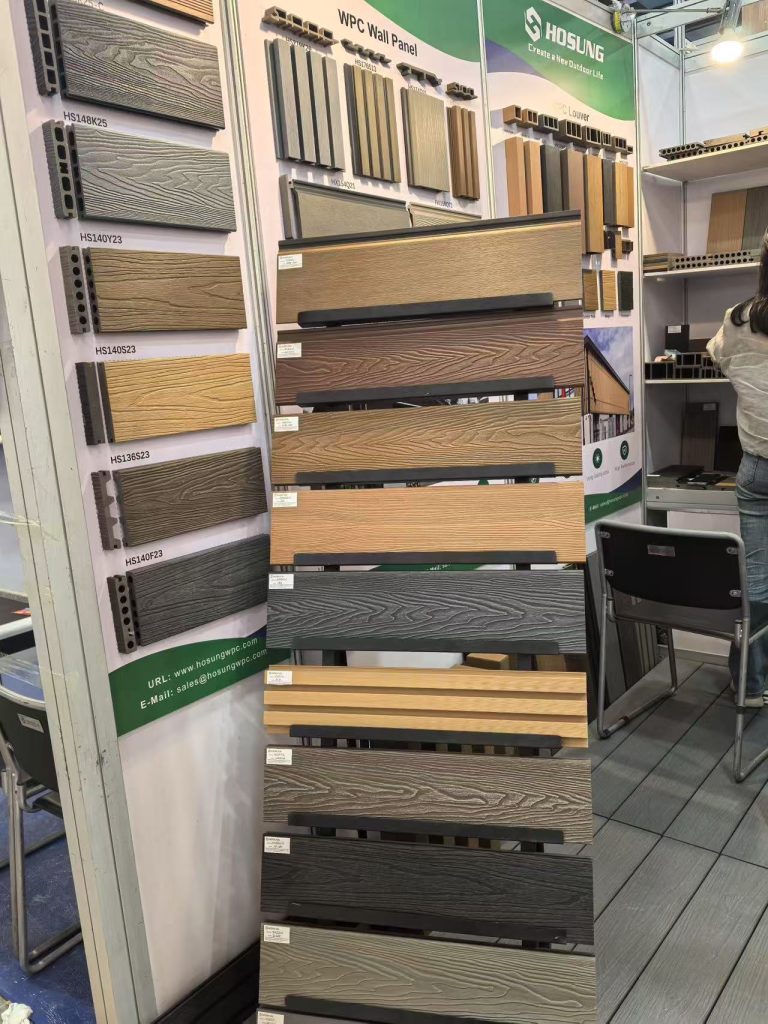
Installation Tips That Help You Save
Labor often makes up 30%–50% of decking costs. Here’s how to cut down on expenses during the install:
1. DIY if Possible
Many hollow boards are lightweight and feature user-friendly fastening systems. If you’re handy, installing your deck can cut costs dramatically.
2. Use Standard Board Lengths
Minimize waste by designing around the available lengths of composite boards (typically 2.4m, 3m, or 3.6m). Less cutting = less material waste.
3. Opt for Simple Layouts
Fancy inlays or curved edges increase installation complexity and cost. Keep it simple for a sleek, modern look at a lower price.
Maintaining Your Budget Composite Deck
One of the biggest advantages of composite decking is minimal maintenance, especially when compared to wood.
To extend the lifespan of your best budget composite decking, follow these simple steps:
Sweep regularly to prevent buildup of debris.
Wash with soap and water every few months.
Avoid dragging furniture to prevent scratches.
Use rubber mats under grills or furniture feet.
Even budget composite boards will last 15+ years with proper care—significantly longer than low-grade timber.
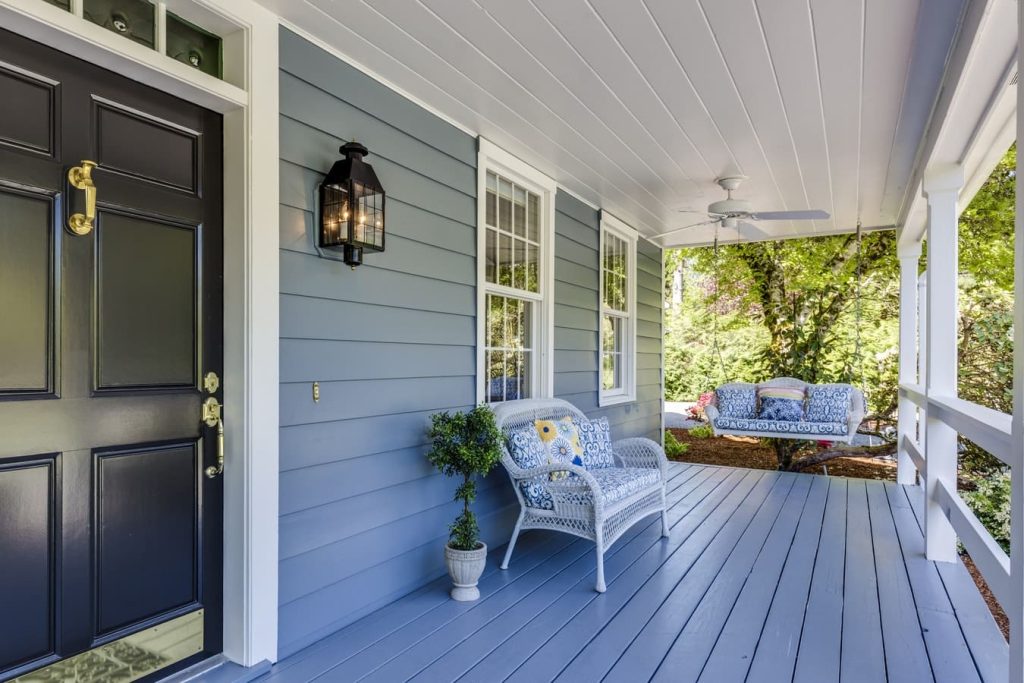
Hosung’s Contribution to Affordable Composite Decking
Hosung offers a wide range of composite decking products, including budget-friendly hollow and uncapped varieties. Known for high manufacturing standards and modern designs, Hosung’s products are suitable for:
Homeowners seeking affordable outdoor upgrades
Landscapers and designers working on budget projects
Contractors looking for easy-to-install options
While many premium brands dominate the spotlight, Hosung consistently delivers solid performance at accessible price points—making them a top choice for the best composite decking on a budget.
Conclusion: Create a High-End Look Without the High-End Price
Finding the best budget composite decking doesn’t mean sacrificing aesthetics, performance, or longevity. With a wide array of affordable options available—from uncapped boards to hollow-core solutions—you can create an inviting outdoor space that looks luxurious without costing a fortune.
By choosing wisely, planning efficiently, and opting for a reliable supplier like Hosung, you’ll enjoy a long-lasting, visually pleasing deck that’s as gentle on your wallet as it is on the environment.
Ready to Build Smart on a Budget?
Explore cost-effective composite decking solutions today and bring your outdoor dreams to life—without breaking the bank.

